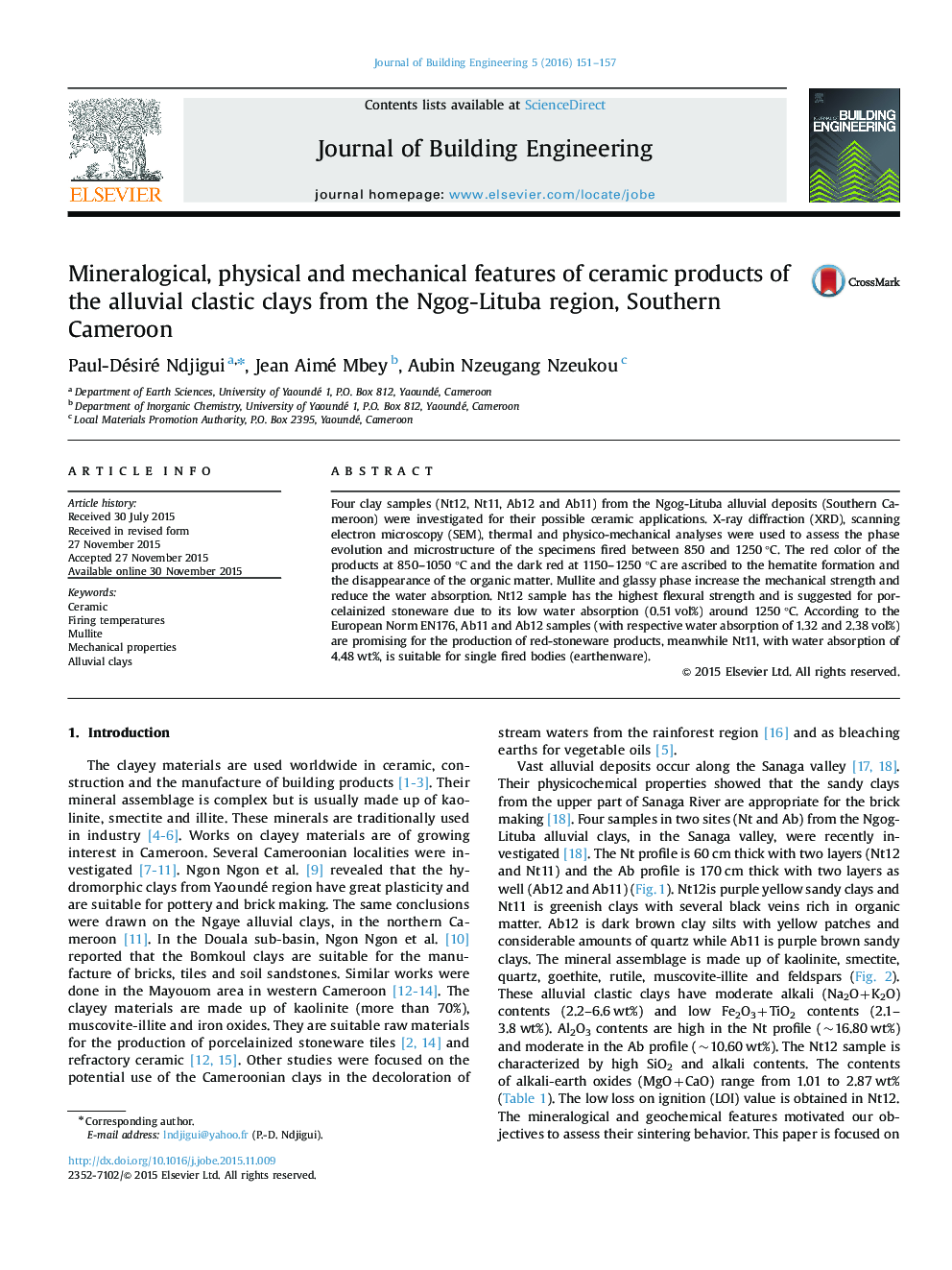| Article ID | Journal | Published Year | Pages | File Type |
|---|---|---|---|---|
| 283844 | Journal of Building Engineering | 2016 | 7 Pages |
•Ngog-Lituba alluvial clays.•Fired products for their possible ceramic applications.•Suitable for eathenware , red-stoneware and porcelainized stoneware.
Four clay samples (Nt12, Nt11, Ab12 and Ab11) from the Ngog-Lituba alluvial deposits (Southern Cameroon) were investigated for their possible ceramic applications. X-ray diffraction (XRD), scanning electron microscopy (SEM), thermal and physico-mechanical analyses were used to assess the phase evolution and microstructure of the specimens fired between 850 and 1250 °C. The red color of the products at 850–1050 °C and the dark red at 1150–1250 °C are ascribed to the hematite formation and the disappearance of the organic matter. Mullite and glassy phase increase the mechanical strength and reduce the water absorption. Nt12 sample has the highest flexural strength and is suggested for porcelainized stoneware due to its low water absorption (0.51 vol%) around 1250 °C. According to the European Norm EN176, Ab11 and Ab12 samples (with respective water absorption of 1.32 and 2.38 vol%) are promising for the production of red-stoneware products, meanwhile Nt11, with water absorption of 4.48 wt%, is suitable for single fired bodies (earthenware).
